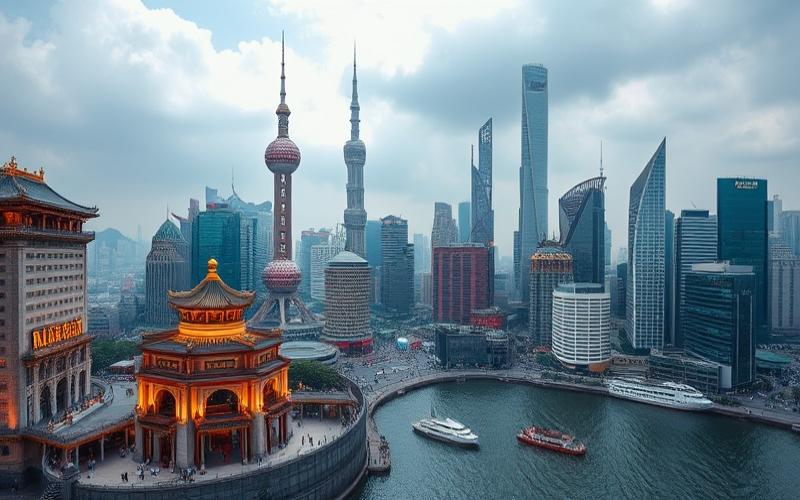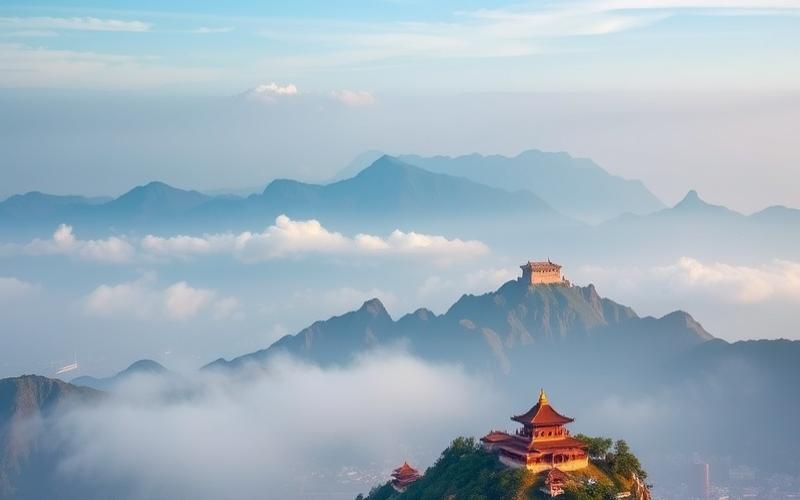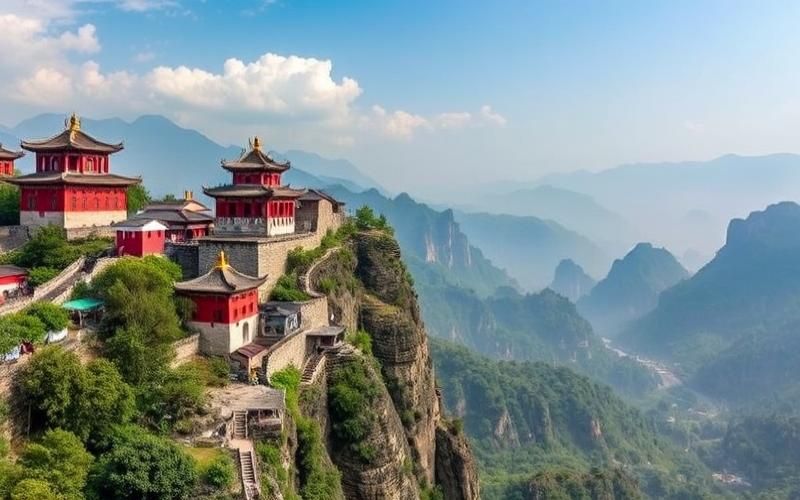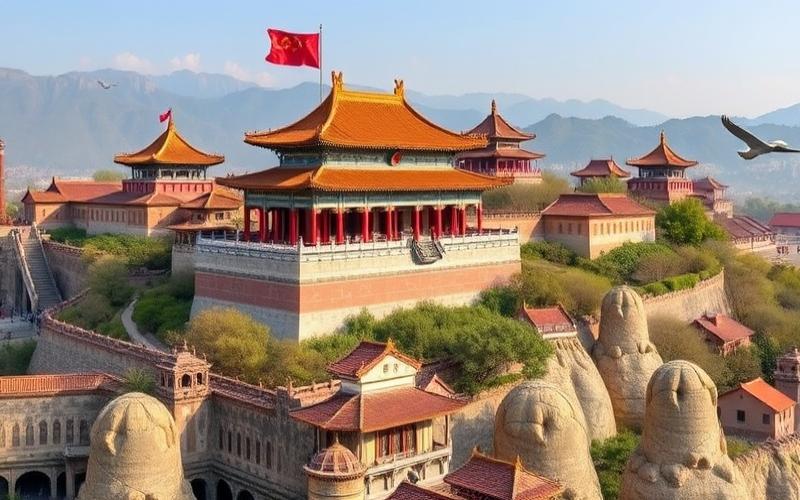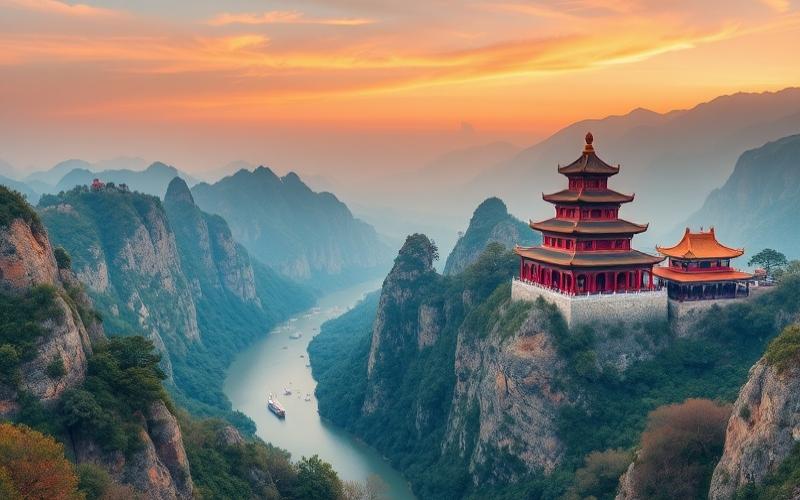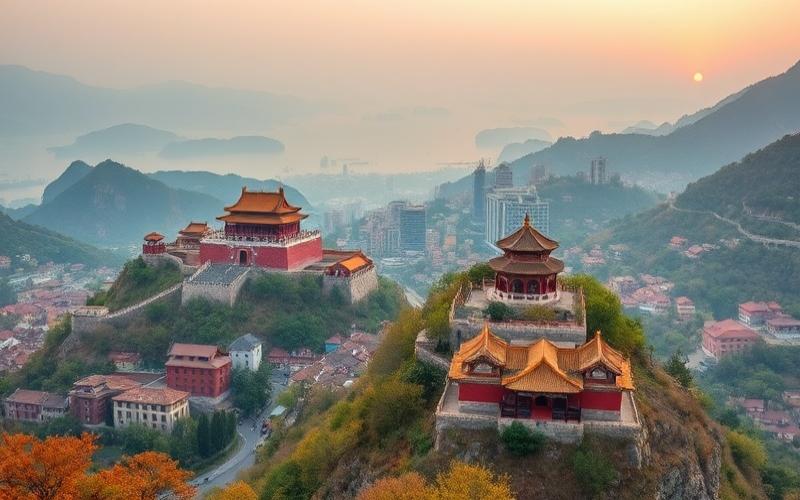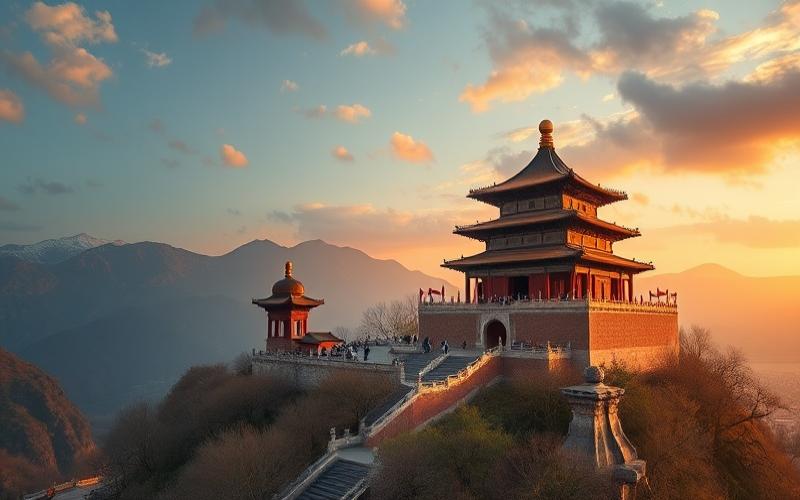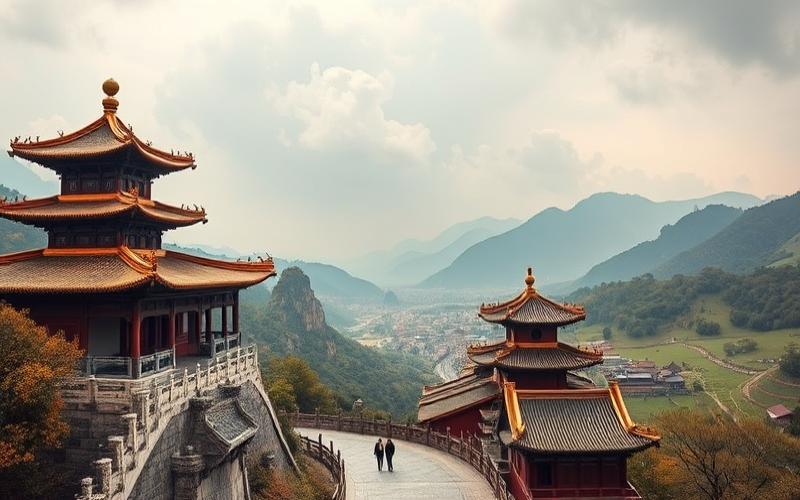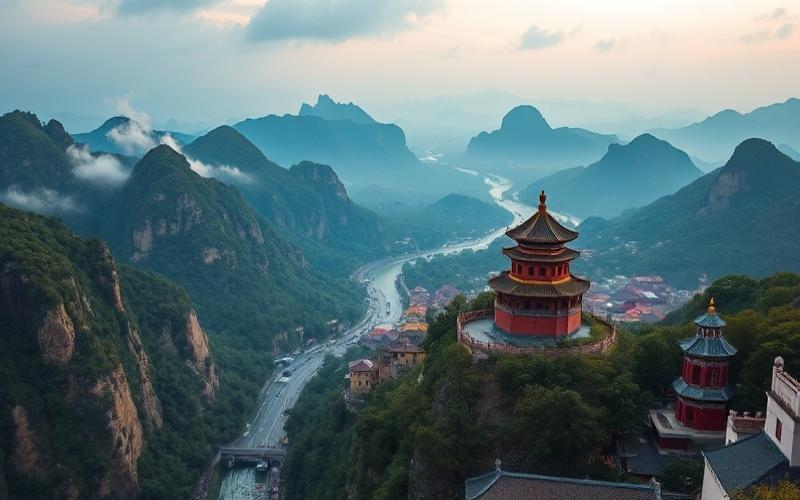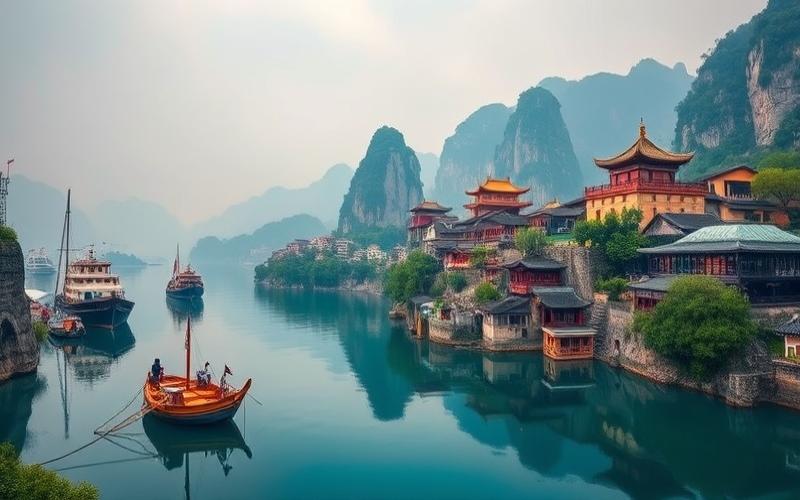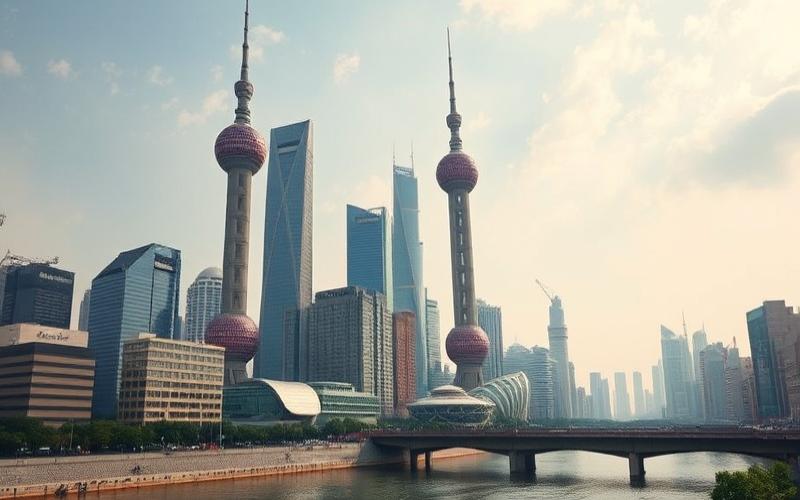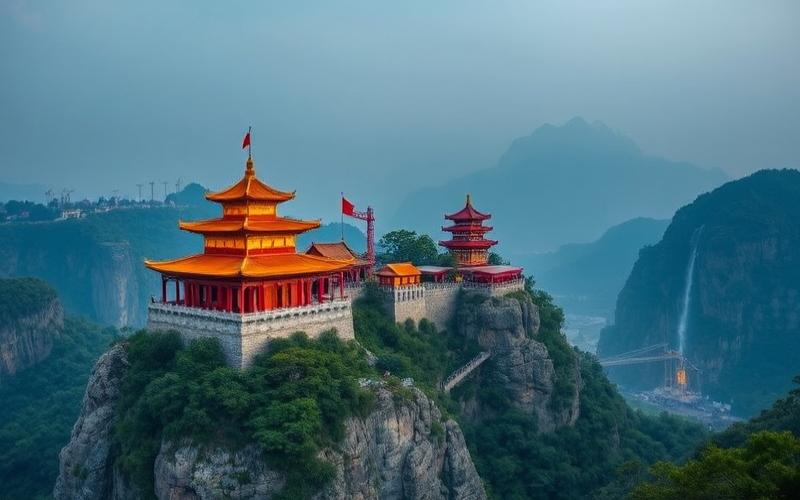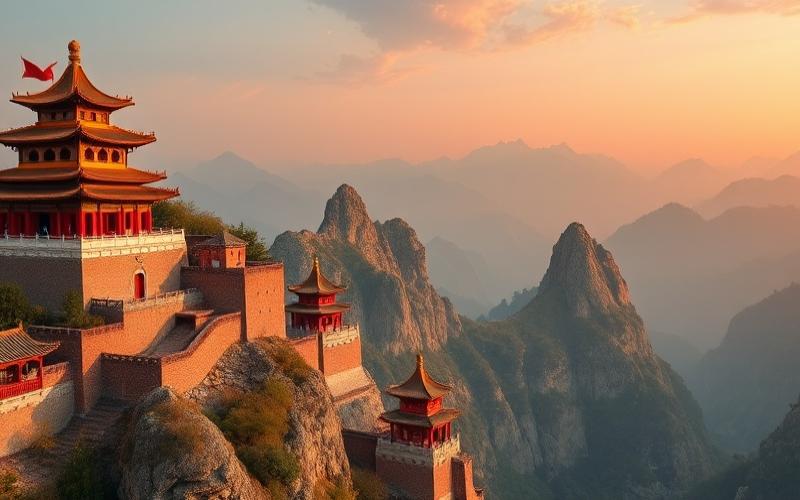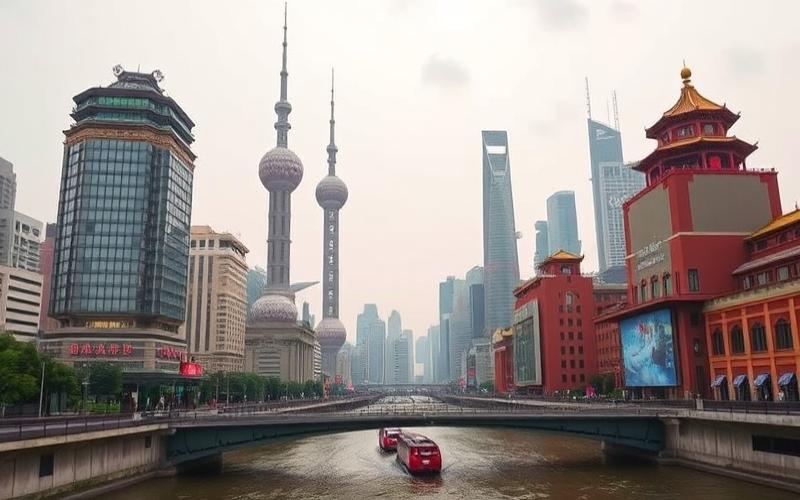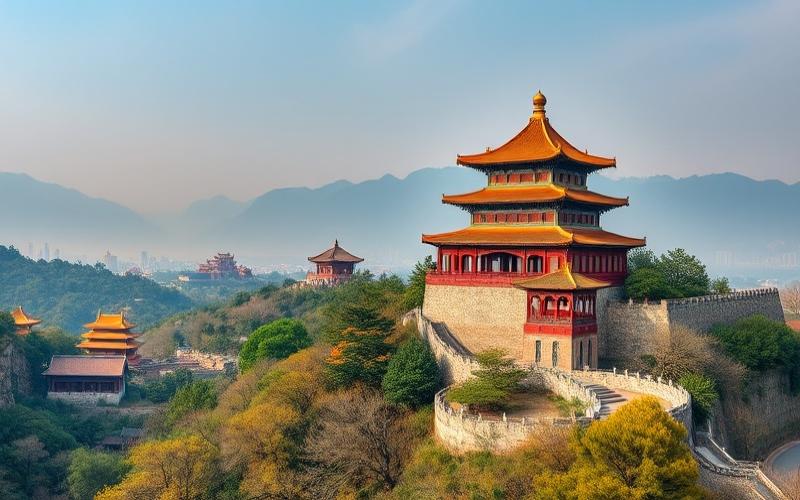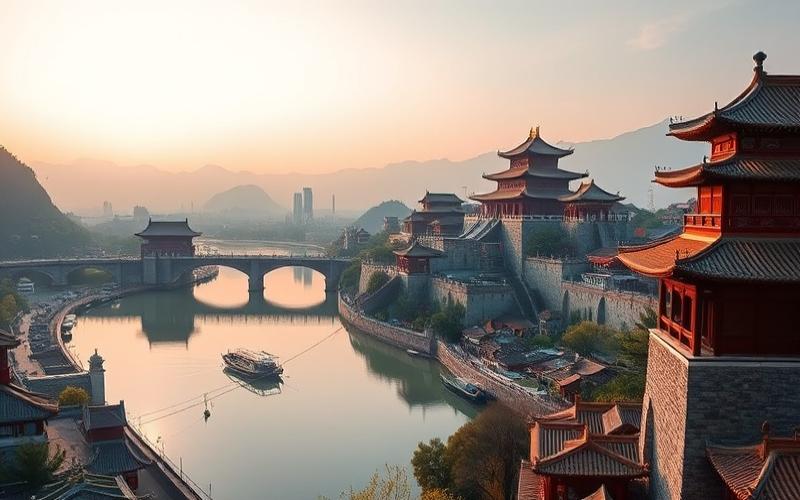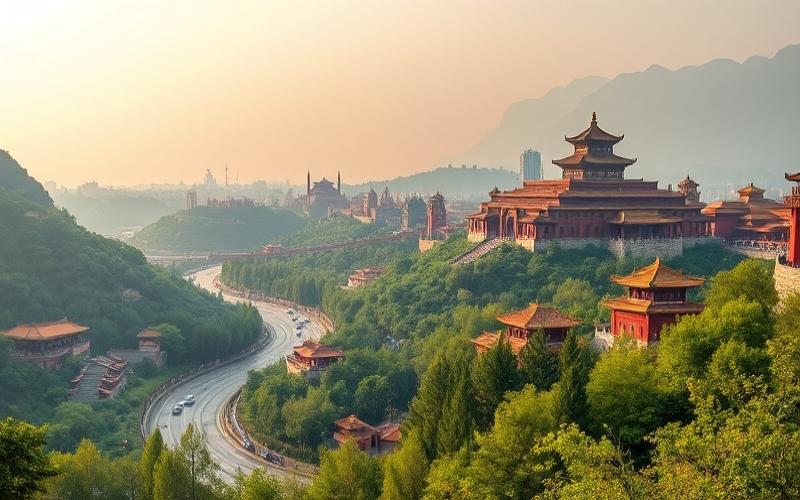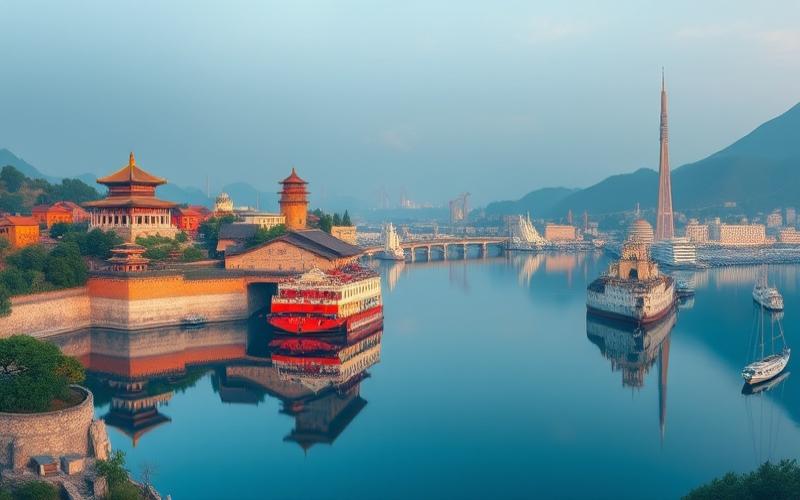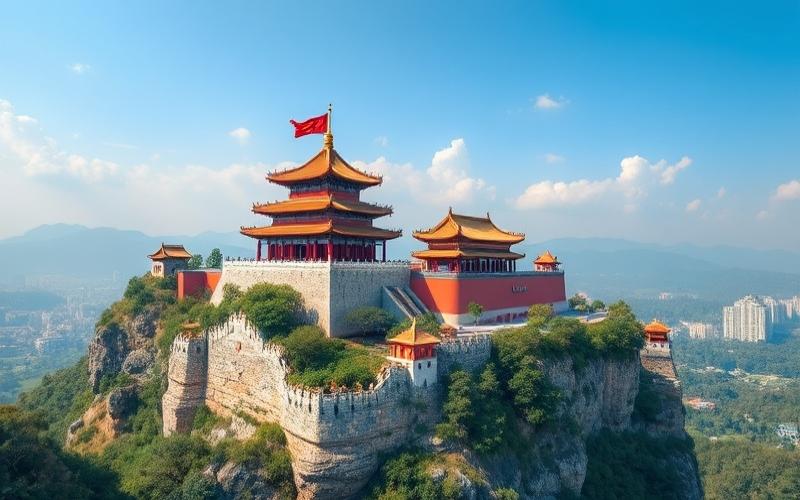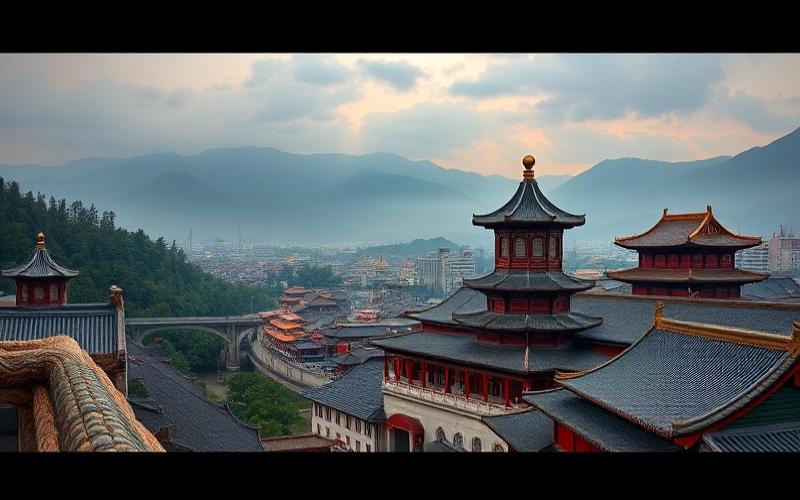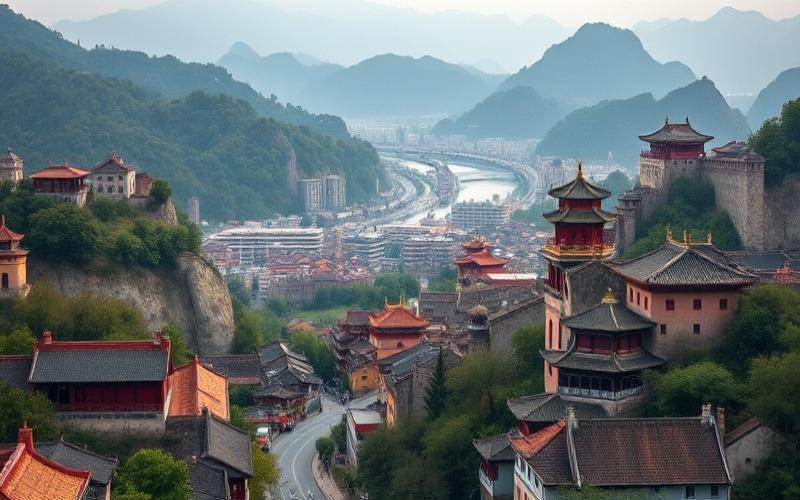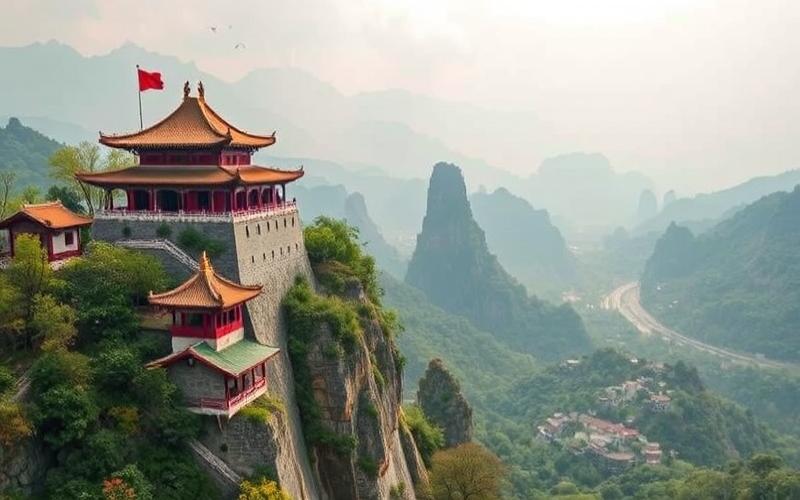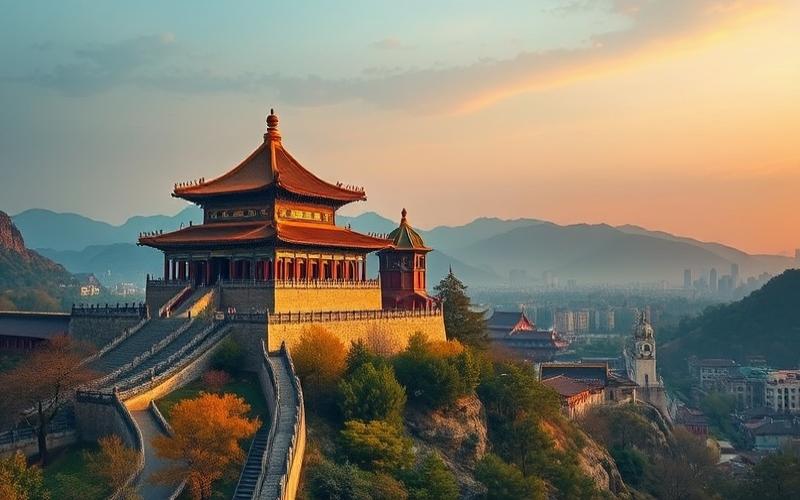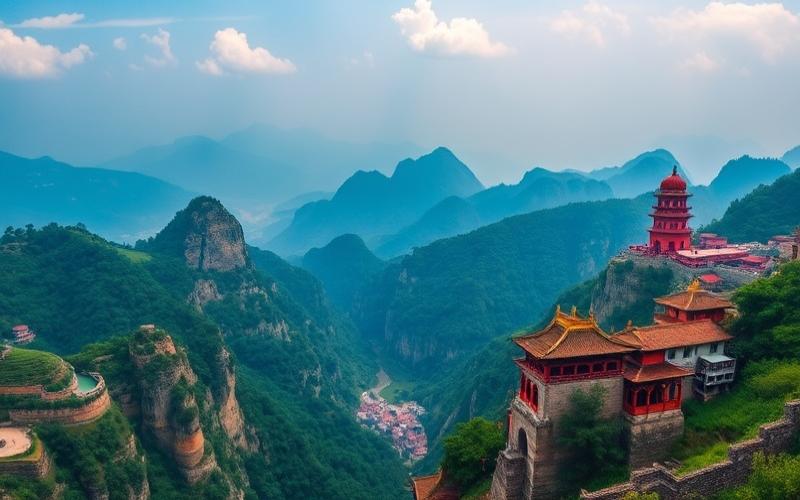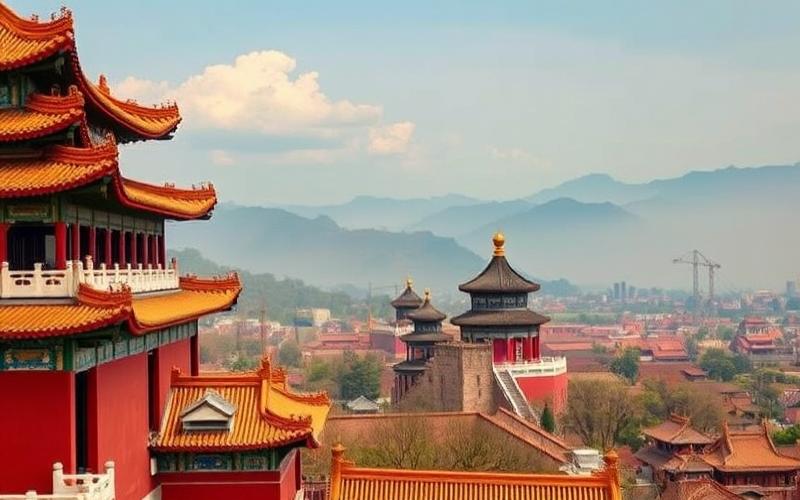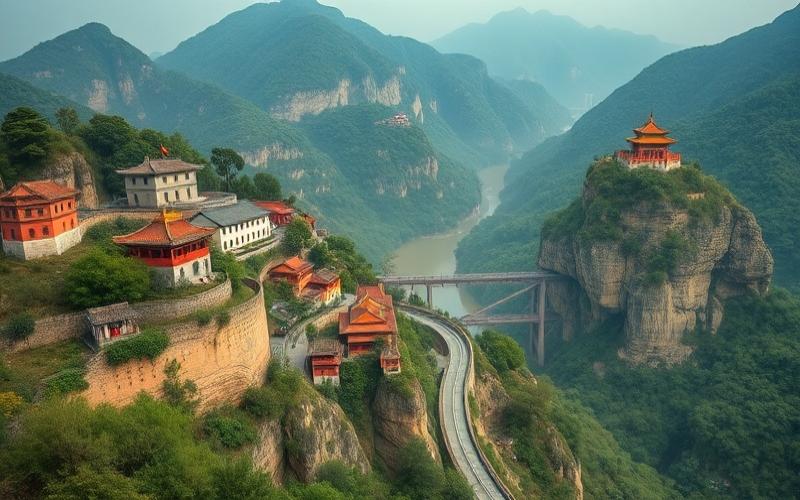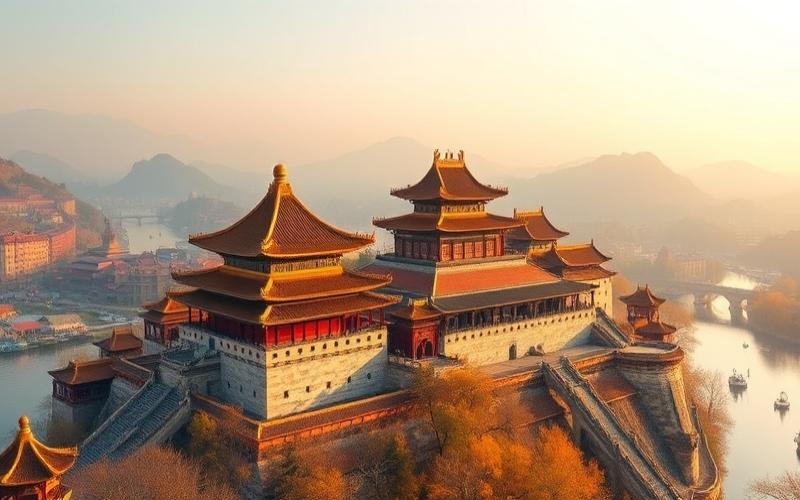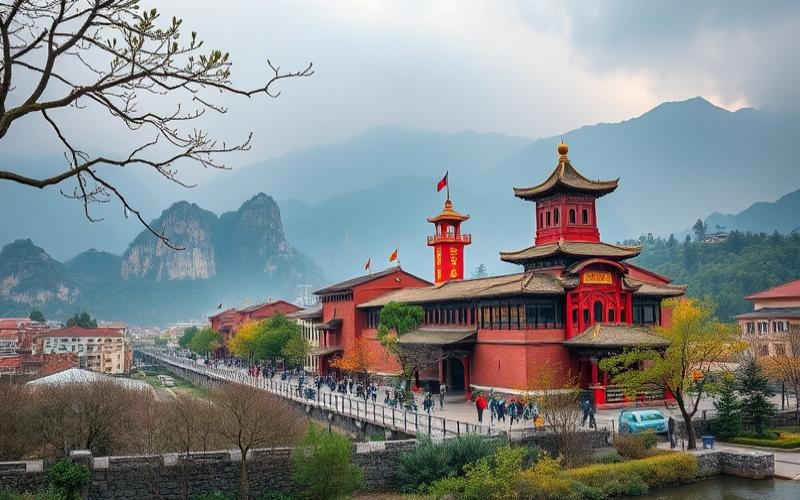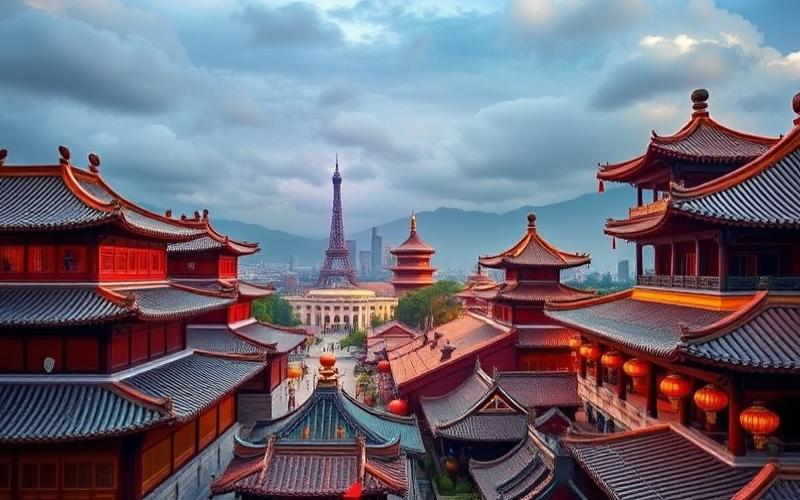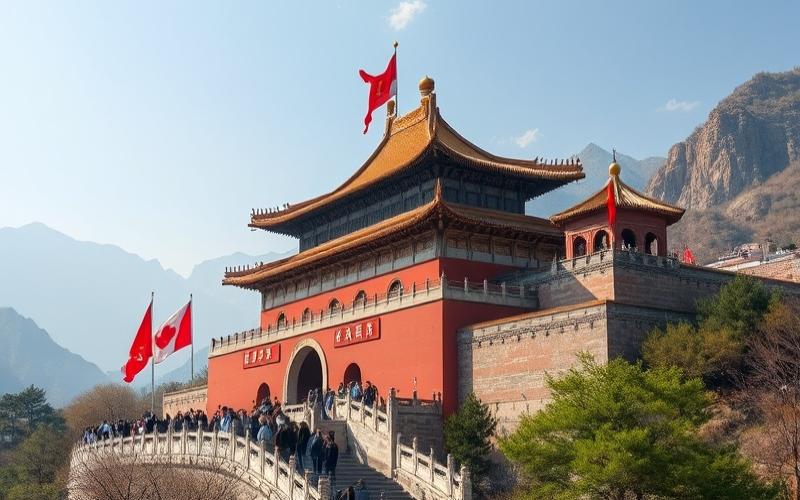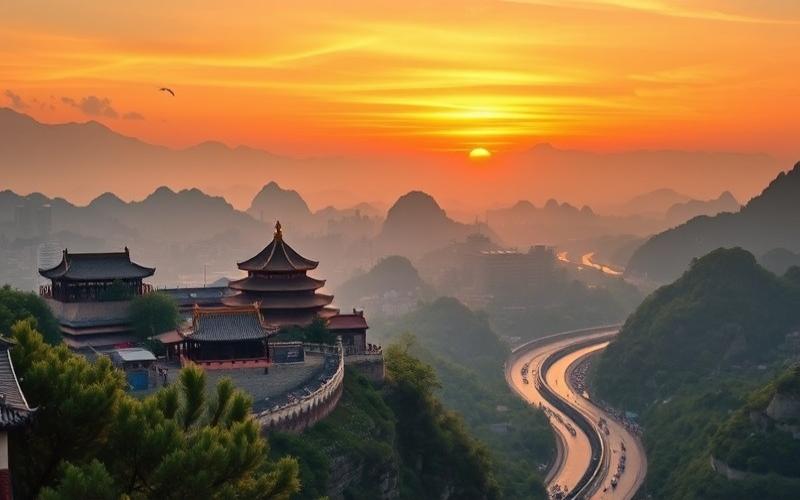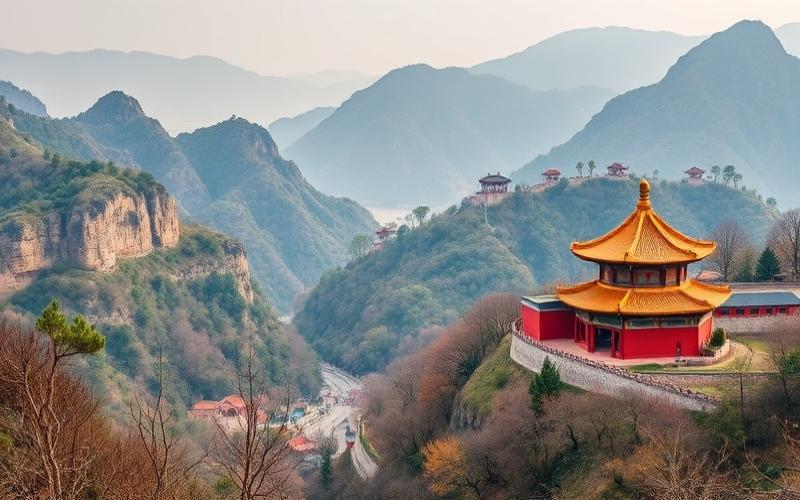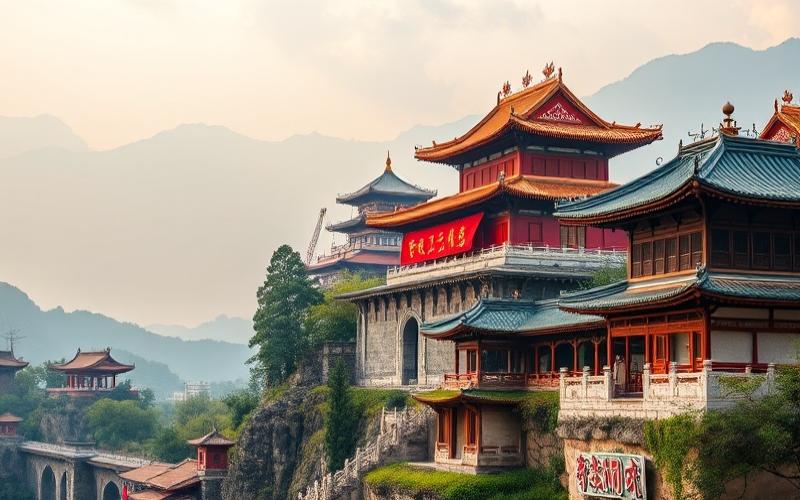
 Published on and written by Cyril Jarnias
Published on and written by Cyril Jarnias
Relocating to China presents an exciting adventure, yet it comes with numerous challenges, particularly adapting to local climate variations. From the frigid north of Harbin to the sweltering summers of Shanghai, this country offers vast climatic diversity that can surprise expatriates.
To help you make the most of your stay, this article will provide essential practical tips, ranging from selecting appropriate clothing to tricks for maintaining daily comfort. Discover how these adjustments can transform a potential constraint into an opportunity for personal enrichment.
Finding the Right Balance: Understanding China’s Climate
China exhibits remarkable climatic diversity, marked by significant regional variations. The north experiences harsh winters with temperatures that can drop below -20°C and hot summers sometimes reaching 40°C, though humidity remains moderate. The south is distinguished by a subtropical climate: winters are mild (often above 10°C) and summers are long, hot, and very humid, accompanied by abundant rainfall (up to 2,000 mm annually). In the east, the climate is temperate to humid subtropical with four distinct seasons, while the west is dominated by an arid or semi-arid continental climate—very hot summers, cold winters, and low precipitation.
| Region | Winter Temperatures | Summer Temperatures | Annual Precipitation |
|---|---|---|---|
| North (Beijing) | -4 to 4°C | 21-31°C | ~570 mm |
| South (Guangzhou) | 9 to 18°C | 26-33°C | ~1,700 mm |
| East (Shanghai) | 1 to 8°C | 23-32°C | ~1,200 mm |
| West (Urumqi) | -15 to -8°C | 18-28°C | ~280 mm |
Seasons Vary Greatly by Region:
- Winter:
- North & West: dry cold to freezing; serious insulation needed.
- South: mild but more humid.
- Spring/Autumn:
- Generally short periods in the north; marked climate transitions.
- Longer in the south with pleasant temperatures but risk of sudden showers.
- Summer:
- Hot to scorching everywhere; south & east very humid with frequent rains due to summer monsoons.
Practical Tips for Expatriates:
Plan an Appropriate Wardrobe:
- North/west winter: thick insulating coat, gloves/hat/scarf, thermal clothing.
- South/east summer: light breathable clothing in cotton or linen; raincoat or umbrella essential during monsoon.
- Spring/autumn: layering to adapt to rapid temperature fluctuations.
Housing Preparation:
- Enhanced thermal insulation in the northwest; efficient heating recommended as some homes may lack effective centralized systems in these cold continental regions.
- Air conditioning essential in the southeast where heat and humidity prevail for several months a year. Dehumidifier advised against persistent dampness.
Notable Weather Events:
- The summer monsoon, mainly between May and September in the southeast and east—causes heavy, sometimes torrential downpours that can lead to rapid flooding or flash floods. It is advisable to regularly check local weather alerts before any major travel during this period and avoid mountainous areas prone to mudslides after heavy rains.
- Sandstorms mainly strike the north/northwest in spring; it is then advisable to limit outings during pollution/dust storm alerts, close windows/vents at home, and possibly wear a mask/eye protection outside.
Impact of Climate Change:
Climate change is intensifying some extreme trends observed in recent decades:
- Increased frequency of severe weather events like prolonged heatwaves in the central-north or exceptional floods in some southern valleys;
- Possible lengthening of heatwave periods and gradual shift in the traditional seasonal calendar;
- Necessity for all—residents and newcomers alike—to adopt a flexible attitude towards unexpected weather by staying informed via reliable weather apps/official local institutions, investing if needed in appropriate home equipment, and favoring a modular clothing approach capable of managing rapid transitions between extreme seasons.
Daily balance will therefore depend as much on wise equipment choices as on constant vigilance regarding the rapid changes in China’s climate.
Good to Know:
China exhibits impressive climatic diversity, with significant variations between its regions: from freezing temperatures and low precipitation in the north, such as in Beijing, contrasting with tropical conditions in the south where Guangzhou experiences hot, humid summers. The four seasons also differ by region, featuring harsh, dry winters in the north and scorching summers in the south. To adapt, expatriates should consider robust thermal insulation for homes in the north and efficient air conditioning for housing in the south, not forgetting to adjust their wardrobe for seasonal transitions. Summer monsoons on the southeastern coast require preparations for heavy rains, while the north faces frequent sandstorms, demanding precautions to stay safe and maintain comfort. Climate change exacerbates these phenomena, causing more extreme and unpredictable weather events. It becomes crucial to remain flexible and develop resilience to these climatic whims, for example by investing in resilient infrastructure and staying informed about long-term forecasts.
Adaptation Strategies: Coping with China’s Climate Extremes
Traditional Strategies for Climate Extremes in China:
Traditional Architectural Techniques:
- Use of steeply pitched roofs to allow rapid runoff of heavy rains, particularly in the south and regions exposed to typhoons.
- Construction of stilted buildings (especially in the southeast) to avoid coastal flooding and water surges.
- Thick walls and local materials (rammed earth, bricks, tiles) to insulate against heat and humidity or protect from cold depending on the region.
- Courtyards (siheyuan) allowing air circulation in summer and protection against wind in winter.
Government Warning Systems:
- Dissemination of official weather alerts via SMS, mobile apps, radio, and television as soon as an extreme phenomenon (typhoon, flood, heatwave, cold wave) is detected.
- Color-coded alerts (blue, yellow, orange, red) to indicate severity and necessary measures.
- Deployment of multilingual messages in major cities to inform non-Chinese populations.
Daily Measures Adopted by the Local Population:
- Wearing season-appropriate clothing: loose, light cotton or linen garments in summer; multiple layers of wool or insulating fibers in winter; raincoats and boots during the rainy season.
- Seasonal dietary practices from traditional Chinese medicine: in summer, consumption of hydrating and cooling foods (watermelon, cucumber, light green tea), limitation of fatty and spicy foods; in winter, fortifying diet (soups, ginger, ginseng root) to boost immunity.
- Use of medicinal herbs to strengthen the body’s defenses against climatic aggressions (astragalus, ganoderma, ginseng, cloves).
Agricultural Practices:
- Agricultural calendar adjusted according to climate cycles and risks of typhoons/floods in the south.
- Terracing and canal techniques to limit erosion and water accumulation.
Practical Tips for Expatriates:
- Prepare an evacuation bag in advance containing documents, medications, spare clothes, flashlight, non-perishable food, and water.
- Identify local shelters and evacuation routes, often indicated in neighborhoods and on local apps.
- Stay informed regularly via Chinese weather apps (such as China Weather or WeChat) and enable alert notifications.
- Purchase health and home insurance covering specific climate risks (flood, storm, typhoon).
- Keep emergency contacts handy (fire department, hospitals, embassy or consulate).
Community Resources and Useful Organizations for Expatriates:
| Resource/Organization | Main Role | Language(s) |
|---|---|---|
| Foreign Embassies and Consulates | Support in case of evacuation, crisis information | Chinese, English, French, others |
| Local Community Centers | Provision of shelters, alert information and assistance | Chinese, sometimes English |
| WeChat Expat Groups | Real-time information sharing, practical advice and mutual aid | Multilingual |
| Chinese Red Cross | Emergency aid during natural disasters | Chinese, sometimes English |
| Official Weather Apps | Personalized alerts, prevention advice | Chinese, English |
Essential Boxed Tips:
For Your Safety:
- Prepare an emergency bag.
- Learn to identify shelters and follow local instructions.
- Subscribe to insurance covering natural risks.
- Stay informed via official and community channels.
List of Daily Measures to Adopt:
- Adapt clothing and diet to the season and daily weather.
- Do not ignore weather alerts, even if they seem frequent.
- Participate in information meetings organized by the community or embassy.
- Keep a minimal stock of drinking water and food in case of supply disruption.
- Learn first aid gestures adapted to local climate risks.
Key Points from Traditional Chinese Medicine for Seasonal Adaptation:
- Harmonize activities and rest with the rhythm of the seasons.
- Strengthen immunity with herbs and targeted nutrition.
- Regularly practice gentle exercises (Tai Chi, Qi Gong) to reinforce Qi, the body’s vital energy.
- Avoid excesses (heat, cold, humidity) by adapting lifestyle habits according to traditional advice.
Good to Know:
In China, traditional strategies for coping with climate extremes include elevated house architecture protecting against floods and construction of buildings equipped to withstand frequent typhoons along the coasts. Infrastructure like urban drains and rainwater collection systems exemplify this effort. The Chinese government has implemented advanced weather warning systems, mobilizing mobile apps and sirens to quickly inform the population of dangerous weather conditions. In daily life, locals are accustomed to wearing waterproof clothing and adapting agricultural practices to anticipate monsoon seasons. For expatriates, it is crucial to know local shelters, have an evacuation plan, and purchase insurance tailored to the specific climate risks in their region. Expatriate communities and local associations often offer useful resources, such as workshops on climate adaptation and discussion groups to share experiences and practical advice.
Equipment and Layout: Optimizing Daily Comfort
China’s climatic diversity requires specific adaptation of housing and equipment to ensure optimal daily comfort. Between the harsh winters of the north and the humid summers of the south, it is essential to choose solutions suited to each context.
Key Equipment to Prioritize by Region:
- Northern China (humid continental climate):
- Central heating or efficient electric radiators.
- Reinforced window insulation (double glazing) and wall insulation.
- Humidifiers to counteract winter dryness.
- Southern China (humid subtropical climate):
- Effective air conditioning with dehumidification functions.
- Fans or natural ventilation systems.
- Sun protection (blinds, thermal curtains).
Construction Materials Adapted to the Chinese Climate:
| Region | Recommended Materials | Advantages |
|---|---|---|
| North | Brick, insulating concrete | Excellent thermal inertia |
| South | Wood, terracotta, bamboo | Natural humidity regulation |
| Urban Areas | Double-glazed glass | Acoustic and thermal comfort |
The choice of materials directly influences thermal comfort by limiting energy loss and improves acoustic insulation essential in large cities.
Furniture & Interior Decoration for Small Urban Spaces:
- Opt for modular furniture: convertible sofas, extendable tables, foldaway beds.
- Prefer built-in storage: wall shelves, closets under stairs or under the bed.
- Choose light colors that visually enlarge the space.
Household Appliances Improving Quality of Life:
- Effective air purifier: essential in polluted areas like Beijing or Shanghai.
- Dehumidifier to limit mold in the humid south.
- Robot vacuum suitable for small urban apartments.
Tips for Personalizing Your Space and Promoting Well-being:
Create a relaxation corner with a comfortable armchair near a bright window.
Add air-purifying green plants (pothos, snake plant).
Install souvenir photos or objects from your home country.
Use relaxing essential oil diffusers.
Prefer natural textiles like cotton or linen for bedding and curtains.
Thanks to these targeted adjustments focusing on local climatic needs as well as the functional optimization of the limited spaces typical of large Chinese metropolises, it is possible to significantly improve comfort while preserving a warm atmosphere conducive to daily well-being.
Good to Know:
To adapt to China’s varied climate, it is essential to properly equip your home to ensure optimal thermal comfort throughout the year. In the north, a good heating system is crucial for the harsh winters, while in the south, air conditioning becomes indispensable during the summer. Opt for suitable construction materials, like traditional bricks that effectively insulate from heat and cold, also improving interior acoustics. In large cities, where space is often limited, maximize comfort with multifunctional furniture and clever decoration to make small spaces welcoming. Don’t forget air purifiers, particularly useful due to recurrent pollution in some regions. To counter the distance from your home country, personalize your space with elements that inspire you and promote your well-being, such as personal items or familiar patterns.
Preserving Health and Well-being Against Climate Challenges
China exhibits great climatic diversity, ranging from the tropical zones of the south (Hainan, Guangdong, Yunnan) to the temperate and cold regions of the north (Heilongjiang, Inner Mongolia), including high-altitude plateaus (Tibet, Qinghai). This diversity leads to specific health challenges depending on the region: extreme temperatures, high humidity in the southeast, harsh winters in the north, and extreme weather phenomena like typhoons or sandstorms.
| Region | Main Climatic Characteristics | Major Risks |
|---|---|---|
| South (tropical, subtropical) | Heat, humidity, heavy rains, typhoons | Heatstroke, waterborne diseases, typhoons |
| North (temperate, cold) | Very cold winters, dry summers, sandstorms | Frostbite, respiratory illnesses, pollution |
| Plateaus (Tibet, Qinghai) | Extreme temperatures, low oxygen | Hypoxia, frostbite, solar radiation |
Atmospheric Pollution
Air pollution is a major issue, especially in large cities and industrial areas. To protect yourself:
- Wear a filtering mask (type N95) during pollution or smog peaks.
- Use an air purifier at home, especially for vulnerable individuals (children, elderly, asthmatics).
- Install an air quality sensor to monitor fine particulate levels (PM2.5, PM10) in real time.
- Ventilate your home during hours when pollution is lowest, often early morning or after rain.
Precautions Against Typhoons and Sandstorms
- Prepare a secure shelter: reinforced doors and windows, rooms without windows or basements.
- Assemble essential supplies: drinking water, non-perishable food, flashlight, battery-powered radio, first aid kit, basic medications.
- Limit travel during alerts and follow instructions from local authorities.
- For sandstorms: seal windows and doors, stay indoors, wear glasses and a mask if travel is necessary.
Hydration and Dietary Adaptation
- Drink water regularly, even without feeling thirsty, especially during periods of intense heat or humidity.
- Adapt your diet to the seasons:
- Prioritize water-rich fruits and vegetables (watermelon, cucumber) in summer.
- Consume more energetic and warm dishes (soups, whole grains) in winter.
- Reduce consumption of overly fatty or salty foods during heatwaves to limit dehydration.
Acclimatization and Information Tips
- Acclimatize gradually: increase exposure to heat or cold over several days, adapt the intensity of physical activities.
- Wear appropriate clothing, layered in winter, light and breathable in summer.
- Stay informed of weather forecasts and climate alerts via mobile apps, official sites, or local media.
Medical Services and Health Insurance
- Ensure quick access to appropriate medical services: hospitals, clinics, on-duty pharmacy.
- Subscribe to health insurance covering environmental risks specific to the region (respiratory illnesses, allergies, accidents related to natural disasters).
- Keep emergency numbers and a list of medical contacts readily available.
Summary of Essential Measures:
- Wearing a mask and air purifier against pollution.
- Secure shelter and supplies in case of typhoon or sandstorm.
- Hydration and dietary adaptation according to the season.
- Gradual acclimatization to the local climate.
- Monitoring weather alerts and access to care suited to the region.
Preserving your health in China against climate challenges requires constant vigilance, daily adaptation, and facilitated access to information and care.
Good to Know:
In China, it is crucial to be prepared for regional climate variations to preserve your health. Facing extreme temperatures and high humidity levels, stay hydrated and adapt your diet according to the seasons by favoring local and seasonal foods. Air pollution, particularly present in large cities, requires wearing adequate masks, installing air purifiers in your home, and using sensors to monitor air quality. In case of typhoons or sandstorms, identify secure shelters and always have supplies on hand. To acclimatize to local conditions, proceed gradually and follow weather forecasts and climate alerts. Ensure you have access to quality medical services and subscribe to adequate health insurance to manage the environmental risks specific to your expatriation region.
Disclaimer: The information provided on this website is for informational purposes only and does not constitute financial, legal, or professional advice. We encourage you to consult qualified experts before making any investment, real estate, or expatriation decisions. Although we strive to maintain up-to-date and accurate information, we do not guarantee the completeness, accuracy, or timeliness of the proposed content. As investment and expatriation involve risks, we disclaim any liability for potential losses or damages arising from the use of this site. Your use of this site confirms your acceptance of these terms and your understanding of the associated risks.

